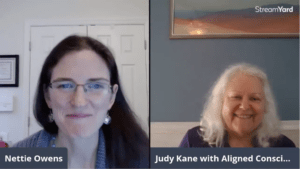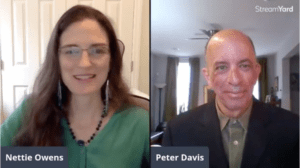How do I know what data to use for my campaigns?
The basic numbers that you want to look at year after year, fiscal year after fiscal year, are how many clients, members, or donors you’ve retained, and on average, how long you end up retaining that person for your organization – whether they’re a donor, member, or a customer.
You’re really looking at their past transactions and how they interacted with the organization. We like to look at lapsed data as well – lapsed donors, ops members, clients – usually, these are what we call the lowest hanging fruit.
Looking at your data and benchmarking where you are today, where you were the previous year, and then what kind of growth you want to see this year to achieve your goals will then help you drill down into how much outreach you need to do and how much money you need to spend.
“You can be more focused on your efforts when you take a hard look at your data – and this goes for any business or organization.”
How do I clean up my database?
Cleanup is a big word. There are many different things that you have to do because you do want to start with clean data.
If you’re not sure if you have the correct contact information or the right email addresses, or whatever the case might be – there are huge databases out there – national databases – that you can run your in-house list against.
“Have you used available data to compare to the data you’re pulling from your lists?”
The other advantage is that you also get additional data points.
We learn in great detail what your ideal client, member, or donor actually looks like. And that takes you to the next step, which is creating your donor, member, or customer profile. Once you have your profile, then all of your communications target segments – target that profile – and then you can also go out and look for lookalikes to that profile.
These are all just simple things you can do today. You don’t have to go out and get a 10,000-piece acquisition list, for instance, to make your numbers. You can do it the smart way. You already have campaigns that are going out, and you can always segment out within those campaigns to streamline costs.
There are a lot of really cool things you can do now with data-driven campaigns.
I’ve worked with several fundraising organizations, and we did a few simple things when we onboarded them.
We implemented what we call an “upgrade dollar strength.” Once we did their analytics, we were able to identify donors that were ready to be upgraded to the next giving level. On their gift mechanism or their response mechanism, there is usually a dollar string on it.
We built those dollar strings based on their last gift. But we used a more aggressive formula to upgrade them to the next giving levels. It was just a data programming thing rather than anything else.
Within those same campaigns, we were also able to run a lapsed donor campaign saying, “Hey! We miss you. These are all the great things that our donors have allowed us to do this year. We miss you being part of our community.” So when you get that message out, you’re able to onboard or reinstate donors that way.
And then, again, looking at your current donor base, why are these people giving? Everybody’s motivated for some reason or another to make that donation.
If you can start drilling down as to what are the programs that you’re offering or that your nonprofit is running for the community that you can talk about to a specific donor, this will increase the likelihood of them engaging with you and responding in the future.
“Are you thinking about how you could potentially translate this for the work that you’re doing? You should be! Perhaps somebody signed on for a program with you at $1,000/month, and you offer them the next level, which is $1500/month – you’ve already increased your income substantially. And it’s really just the next level up.”
Why should I be looking at using data-driven strategies?
Typically, we see a minimum of a 2% increase in overall fundraising, retention, upgrading, or reinstatement. That’s what we target as our minimum goal for the year – 2%. I’ve seen up to 6% or 7% in a year – especially if we’re constantly monitoring the analytics, and we know there’s a core group of donors that are at risk for not giving to us this year.
We can get on the phone and call them.
There are a lot of things you can do in real-time when you’re actually working with your analytics. We’re able to sort of stem those leads, or those drop-offs, that would ordinarily just get dropped off if nobody’s monitoring those closely. So, ordinarily, we see at least a minimum of 2-7% increase.
“So, you have a list, but the more you can insert into that list about your customer, member, or potential donor, the better you can serve them.”
You want to know where they are in life. For many membership organizations, it’s important to know where my professional member is at this point in his life? Is he starting a family? Is he buying a house? And how am I going to support him through this transition?
It allows you to relate to them – to meet them where they are – and to show them how your product, your service, or how their donation impacts what they are finding of interest at that current moment.
3 Action Steps
1. Utilize data to tailor campaigns that target your ideal client or customer.
2. Clean up your database so that your efforts are streamlined and targeted.
3. Set goals for your campaigns to help you track your progress.
Connect with Sherene Rapoport at LinkedIn.
Please comment below. I would love to hear from you.














No comments yet.